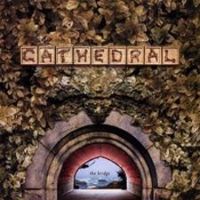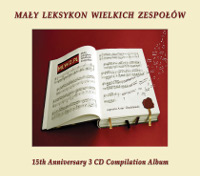 This album is surely not easy in reception. From the listener it requires focus, patience and devotion of time: it needs to be played a few times before it starts revealing its underlying beauty. You must listen to it once, twice, three times… and don’t get discouraged if at times it annoys or seems to lead nowhere. In such a case, a little step backwards or a moment’s relax is necessary, only to come back to the album in a while. Our patience will doubtless be repaid by Cathedral’s music.
This album is surely not easy in reception. From the listener it requires focus, patience and devotion of time: it needs to be played a few times before it starts revealing its underlying beauty. You must listen to it once, twice, three times… and don’t get discouraged if at times it annoys or seems to lead nowhere. In such a case, a little step backwards or a moment’s relax is necessary, only to come back to the album in a while. Our patience will doubtless be repaid by Cathedral’s music.
How long is the record-breaking period of time between the first and the second album of one performer? This question encourages potential archivists to arduous work of a browser and could probably be a good starting point for broader sociological deliberations. I am in the dark as to who is currently wielding the world record in this area, but I am sure that Cathedral is among the leaders. The debut album of this American group, entitled “Stained Glass Stories” was released in 1978, which was at the peak of punk revolution and on the threshold of new wave fashion. No wonder that this album, partly a swansong of American progressive rock, passed practically unnoticed and the musicians of Cathedral got down to their other business, putting their musical ambitions aside.
In 1991, when Syn-Phonic record company re-released “Stained Glass Stories” for a CD, Cathedral was in the spotlight for a moment again, but several years had to pass before the band reactivated – in an almost original line-up: Paul Seal (v), Mercury Caronia IV (dr), Thomas Doncourt (k) and Fred Callan (bg). The only substitution is the guitarist: David Doig stood in for Rudy Perrone. To dispel any doubts, he did it in a very spectacular manner, including on “The Bridge” an instrumental 6-minute composition “Kithara Interludium”, which he composed and performed all by himself. It is a masterpiece as far as playing the acoustic guitar is concerned. “Kithara Interludium” divides the album into two parts, both of which contain 3 tracks, including one 10+ minute suite each. It is those two long compositions, which on “The Bridge” shine the most brightly and fully. I suggest remembering their titles: “The Monsterhead Suite: Parts 1, 2 & 3” and “The Secret”. They are both full of passion, profound beauty and unbelievable feats in the style of King Crimson and Yes. “Angular World” is another track that earns distinction. There, the crimson echoes reverberate very distantly: there is a wonderful sound of mellotrones, conjuring up the images of the bygone époque, the vocalist sings as if inspired, and the complicated sounds fly from the speakers, giving a listener a lot of listening pleasure. However, I repeat what I said at the beginning: Cathedral do not play the music which is the instant friend of the listener. At least, not during the first attempt at listening. It is rather a cat and mouse game, at times slowly exposing some magical musical solutions, at times drawing the curtain of mystery, but at the next listening it attacks and surprises the listener with something new and as yet undiscovered.
I think that a reliable reference for “The Bridge” would be the King Crimson’s album “Thrak”. If somebody has taken a liking to that memorable work of Robert Fripp and company, he/she is bound to like the new album of Cathedral.
Translated by: Katarzyna Chachlowska







